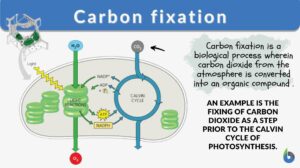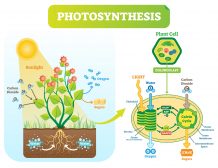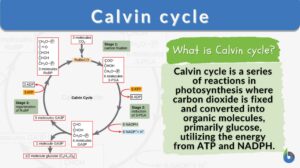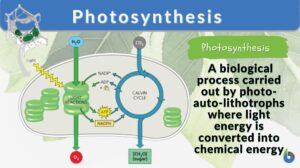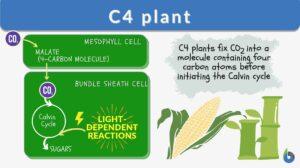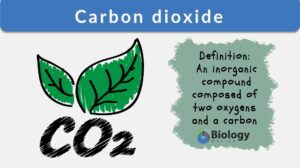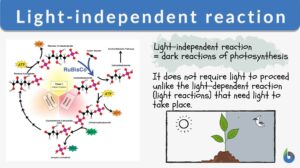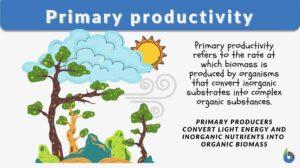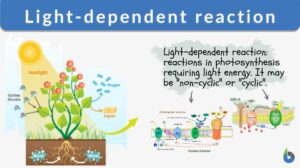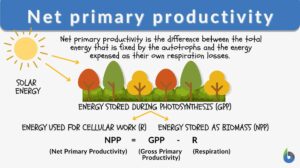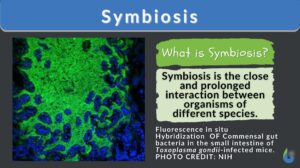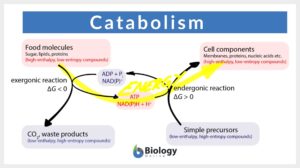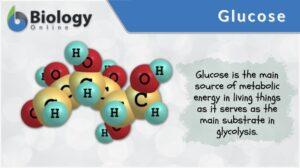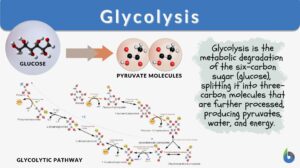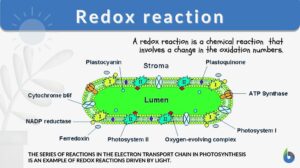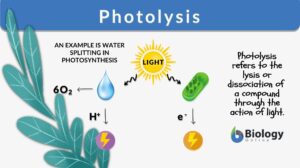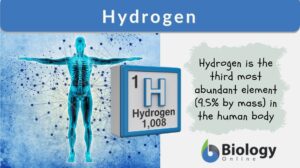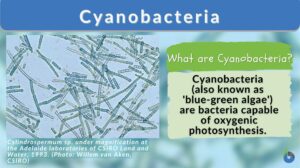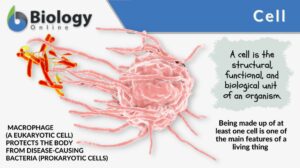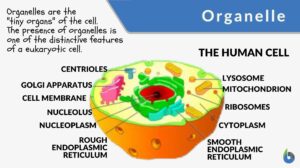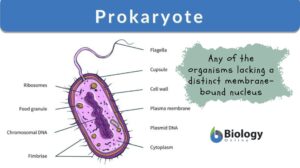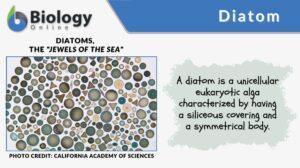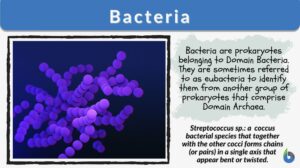Search Results for: carbon fixation
Carbon fixation
Carbon Fixation Definition We know that the earth contains many elements. The periodic table shows us just how many... Read More
Photosynthesis – Photolysis and Carbon Fixation
Photosynthesis is the means that primary producers (mostly plants) can obtain energy via light energy. The energy gained... Read More
C4 carbon fixation pathway
Definition noun A metabolic pathway where CO2 is first added to phosphoenolpyruvate by the enzyme, PEP carboxylase,... Read More
Calvin cycle
Calvin Cycle Definition The Calvin cycle, also known as the Calvin Benson cycle or the dark reactions, is a series of... Read More
C3 carbon fixation pathway
Definition noun A metabolic pathway where CO2 is converted to 3-phosphogylycerate, the first stable intermediate organic... Read More
Photosynthesis
Photosynthesis is a physio-chemical process carried out by photo-auto-lithotrophs by converting light energy into chemical... Read More
Carbon dioxide
Carbon Dioxide Definition noun, car·bon di·ox·ide, /daɪˈɒksaɪd/ (biochemistry) An inorganic compound, with the... Read More
Light-independent reaction
The process of photosynthesis is a biological procedure in which plants produce oxygen and energy (sugar) by using light... Read More
Hatch-Slack pathway
Definition noun A metabolic pathway first delineated in depth by M. D. Hatch and C. R. Slack (in 1966). In this pathway, the... Read More
Hsk pathway
Definition noun An abbreviation for hatch slack kortshak pathway: a metabolic pathway first determined by Burr and Kortshak... Read More
Primary productivity
Planet Earth is home to different types of life forms ranging from microscopic bacteria to giant whales and elephants. To... Read More
Assimilation
Assimilation Definition What is assimilation? Assimilation in biology is defined as the process in which living organisms... Read More
Carboxysome
Carboxysome is a protein-shell micro-compartment inside bacterial cell and is involved chiefly in carbon fixation. It is a... Read More
Nitrogen fixation
Definition noun The conversion of atmospheric nitrogen (N2) into a more usable form by natural means, such as by the... Read More
Light-dependent reaction
Many organisms, such as green plants, convert light energy into chemical energy through the mechanism of photosynthesis. In... Read More
Net primary productivity
In order to keep the biosphere running, different organisms play different roles and functions. Some help in oxygen... Read More
Catabolism
Catabolism Definition Catabolism is the branch of the metabolic process that breaks down complex, big molecules into... Read More
Glycolysis
What is Glycolysis and Why is it Important? Glycolysis is a metabolic pathway by which the 6-carbon molecule of glucose is... Read More
Redox reaction
Redox Reaction Definition What are redox reactions? This is a common term in chemistry and biology. In chemistry, a redox... Read More
Photolysis
Photolysis Definition We define photolysis as a chemical process in which chemical compounds or molecules are split into... Read More
Calvin-Benson cycle
Definition noun A cyclical series of biochemical reactions that occur in the stroma of chloroplasts during... Read More
Calvin-Benson-Bassham cycle
Definition noun A cyclical series of biochemical reactions that occur in the stroma of chloroplasts during... Read More
Bacterioplankton
Definition noun The bacterial component of plankton of aquatic ecosystems Supplement Plankton pertain to the small organisms... Read More
Cyanobacteria
Cyanobacteria Definition Cyanobacteria is a group of photosynthetic bacteria widely distributed in various aquatic habitats... Read More
Net photosynthesis
Definition noun (1) The difference between the total amount of photosynthesis and the sum of the rates of respiration (i.e.... Read More
Rudp carboxylase
RuDP carboxylase --> ribulose bisphosphate carboxylase (Science: enzyme) A copper protein that catalyses the formation of... Read More
Prokaryote
Prokaryote refers to any of the group of living organisms primarily characterized by the lack of a true nucleus and other... Read More
